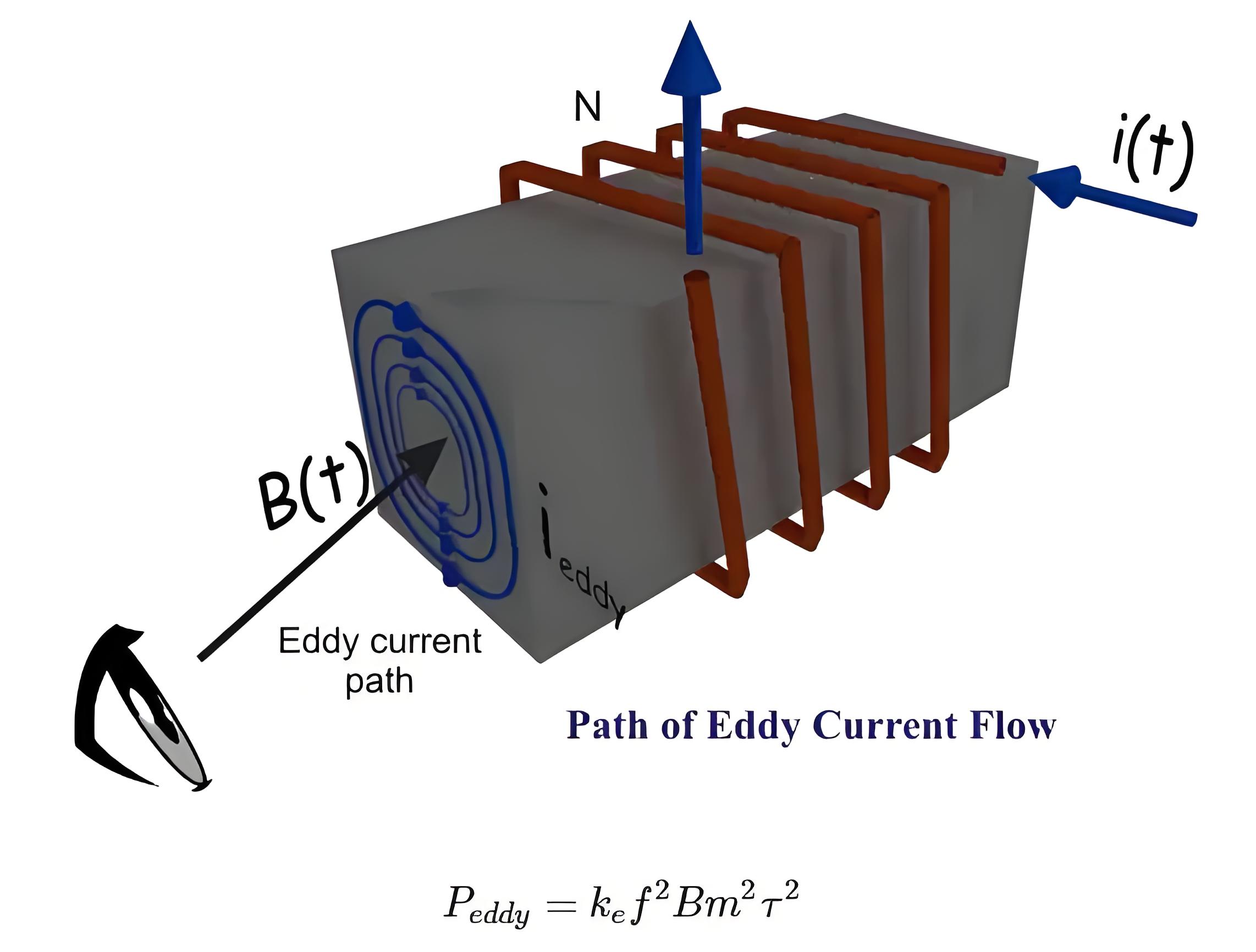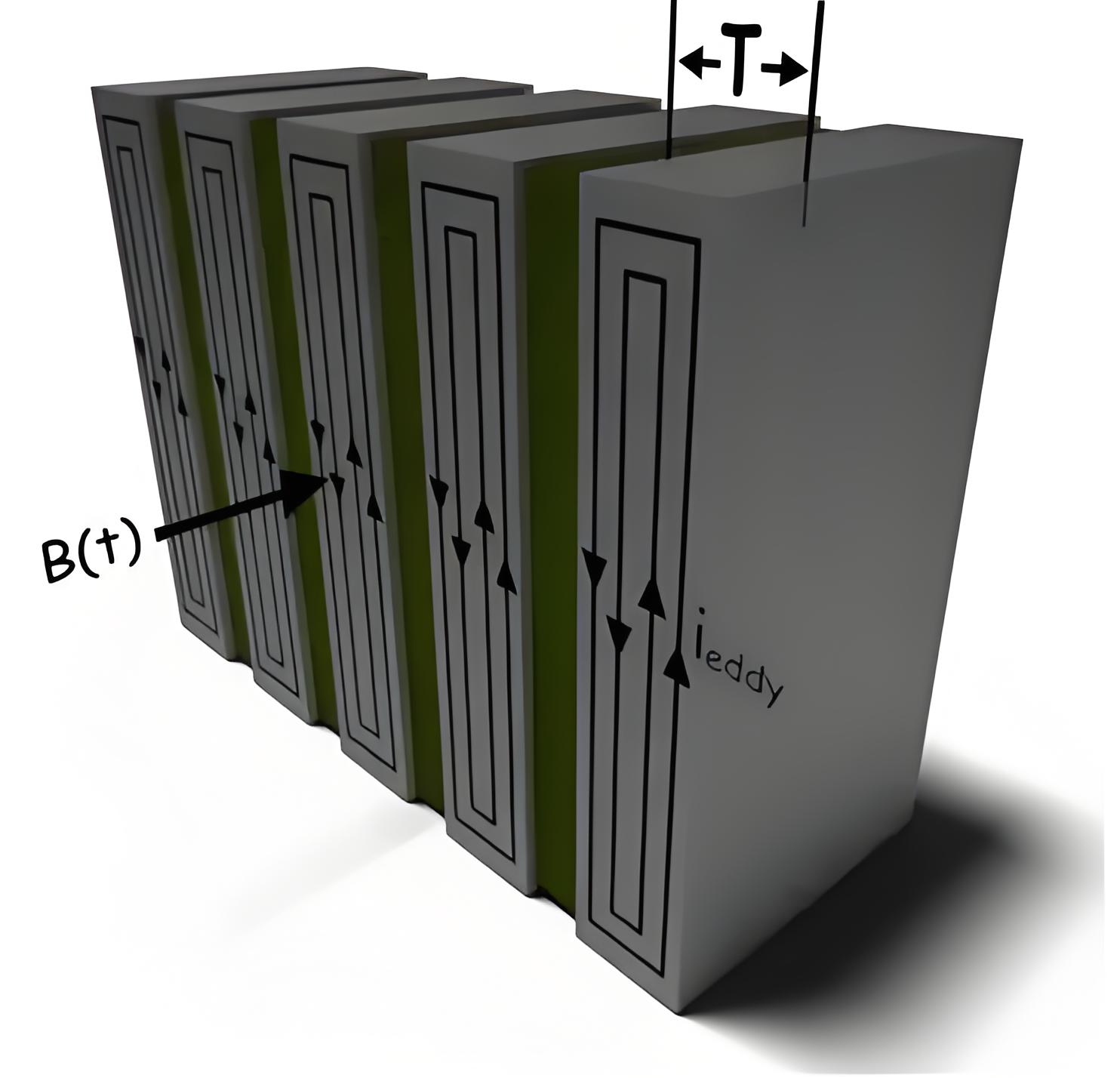Eddy Current Theory and Applications
Eddy Current Definition
According to Lenz’s law, when a conducting loop is exposed to a changing magnetic field, it generates an emf that induces a current opposing the change. Similarly, when a magnetic field changes through a conducting body, like a filament or a slab, it causes currents to flow through the material’s cross-sections.
These currents are given the name eddy currents after the water eddies that are small swirling whirlpools observed in lakes and oceans. These eddy current loops can be both beneficial and undesirable.
While they cause undesirable high heat losses in the material such as transformer core, eddy currents find applications in various industrial processes like induction heating, metallurgy, welding, braking etc. This article deals with the theory and applications of eddy current phenomenon.
Eddy Current Loss in Transformer

The magnetic field inside a transformer core induces an emf, leading to eddy currents according to faraday law and lenz law. In the core section, the magnetic field B(t) from the winding current i(t) generates eddy currents ieddy.
The losses due to eddy currents can be written as follows :
Where, ke = constant depends on the size and inversely proportional to the resistivity of material,
f = frequency of the excitation source,
Bm = peak value of the magnetic field and
τ = thickness of the material.
The above equation shows that the eddy current loss depends on the flux density, frequency and thickness of the material and inversely proportional to the resistivity of the material.
To reduce eddy current losses in transformer, the core is made of stacked thin plates called laminations. Each plate is insulated to restrict the eddy currents to small cross-sectional areas, minimizing their path and reducing losses.
This is represented in the figure below :

In order to increase the resistivity of the material cold rolled grain oriented, CRGO grade steel is used as core of transformer.
Properties of Eddy Currents
These are induced only inside the conducting materials.
These are distorted by defects such as cracks, corrosion, edges etc.
Eddy currents attenuate with depth with highest intensity present at the surface.
These properties allow eddy currents to be used in power, aerospace, and petrochemical industries for detecting metal cracks and damages.
Applications of Eddy Currents
Magnetic Levitation: It is a repulsive type of levitation finds application in modern high speed Maglev trains to provide frictionless transportation. Changing magnetic flux produced by a superconducting magnet placed on the moving train produces eddy currents on the stationary conducting sheet over which train levitates. The eddy currents interact with the magnetic field to produces forces of levitation.
Hyperthermia Cancer Treatment: Eddy current heating used for tissue heating. Eddy currents induced in the conducting tubings by proximal wire windings connected to a capacitor to form a tank circuit which is connected to a radio frequency source.
Eddy Current Braking: Kinetic energy converted into heat due to eddy current losses finds numerous applications in industry .
Braking of trains.
Braking of a roller coaster.
Electric saw or drill for its emergency shut-off.
Induction Heating: This process electrically heats a conducting body by inducing eddy currents with a high-frequency electromagnet. It is mainly used for induction cooking, furnaces to melt metals, welding, and brazing.
Eddy Current Adjustable Speed Drives: With the help of feedback controller an eddy current coupled speed drive can be achieved. It finds applications in metal forming, conveyors, plastic processing etc.
Metal Detectors: It detects present of metals inside rocks, soils etc. with the help of eddy current induction in the metal if present.
Data Processing Applications: Eddy current non destructive testing used in investigating composition and hardness of metal structures.
The Electricity Encyclopedia is dedicated to accelerating the dissemination and application of electricity knowledge and adding impetus to the development and innovation of the electricity industry.













